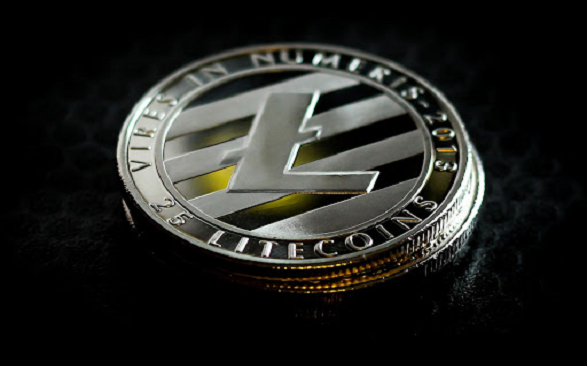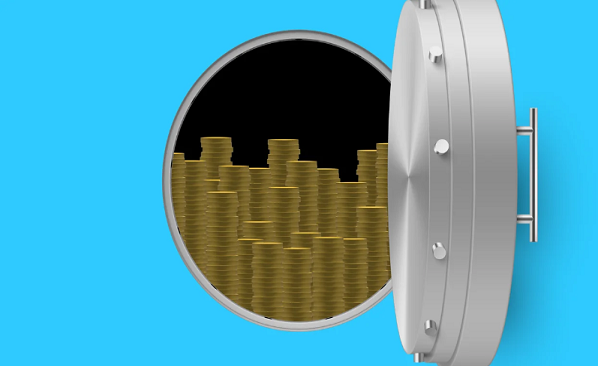Among the earliest cryptocurrencies to ever exist in the world of decentralized finance (DeFi) is Litecoin. The coin was unveiled in 2011, two years after Bitcoin (BTC) the first-ever crypto asset was created. Designed for both individual use and business purposes, Litecoin has since grown exponentially, remaining among the top-ranked and widely traded/ held assets by crypto investors for several years till today.
Represented by the ticker LTC, it is also one of the digital assets that come to mind when we talk about the most established and firm cryptocurrencies globally in terms of liquidity and day-to-day transaction volumes. Currently, data show that in the last 24 hours, a total of 4,882,524 LTC worth $345,656,337 have been traded, at the time of writing.
The growing interest in the native token of the Litecoin blockchain, LTC, from investors has seen the coin’s market capitalization surge considerably to $5,450,653,325. This makes LTC the 12th-largest cryptocurrency on Coinmarketcap’s ranking, at press time. Spurred by its uniqueness in the crypto market, this article seeks to discuss extensively, the many elements, including use cases and projects that contribute to Litecoin being in the limelight in the crypto space.
All You Need To Know About Litecoin (LTC)
Litecoin (LTC) falls under the alternative coins (altcoins) category. It is a top layer one (L1) cryptocurrency that serves as a digital form of money and payment method. It is an open-source, censorship-resistant, and blockchain-secured peer-to-peer decentralized cryptocurrency. For context, LTC is regarded as a Layer 1 crypto because it lives on its blockchain—the Litecoin blockchain.
The launch of Litecoin was announced on 9 October 2011 by Charlie Lee, the token creator and ex-Director of Engineering at Coinbase, on bitcointalk.org. But LTC went live on 12 October 2011 when its genesis block was mined.
On 10 May 2021, during the peak of the bull season, LTC gained massively in the crypto market, hitting an all-time high of roughly $412. But due to many hostile factors (macroeconomic, regulatory, etc) and the numerous project implosions in the crypto industry, the asset has plummeted over 81% and is trading for $75 per coin at press time.
Designed to protect users against inflation, Litecoin has a maximum supply of 84 million only. But according to on-chain data, there are 71,967,105 LTC in circulation at the time of writing. By adopting the PoW consensus, new LTC coins are introduced into the market through a process called mining. It is worth noting that miners on the Litecoin network bring LTC(s) into circulation every 150 seconds (2.5 minutes). The last Litecoin is expected to be mined in approximately 2142.
In line with Litecoin’s coin issuance, miners are rewarded with a certain amount of LTC whenever a block is produced. At the start of the project, 50 LTC per block were usually issued to miners as their reward. Presently, miners only get a reward of 12.5 LTC per block being that after every 840,000 blocks are mined (approximately every 4 years), the block reward halves. After the next halving event, miners on the Litecoin network will start earning only 6.25 coins as rewards per block produced.
Although LTC was created by Charlie Lee, the altcoin is wholly decentralized as it is not controlled by a central authority but is community-run. But to onboard new developments and continually advance the LTC project, Litecoin Foundation, a non-profit organization consisting of volunteers with Charlie Lee as the Director was created and registered in Singapore. One of the most vital projects rolled out by this foundation is the Lightning Network, which was launched in 2018 to improve the scalability of the Litecoin network.
Litecoin Blockchain
The digital cash, LTC, is powered by the proof of work (PoW)-based Litecoin blockchain. As an open-source blockchain project, Litecoin was released under the MIT/X11 license, giving users the power to run, modify, and copy the software, as well as distribute their improved copies of the software. Notably, the Litecoin blockchain is the largest global scrypt-based crypto network.
Litecoin’s first utility is seen in its ability to enable anyone to make private, secure, and borderless payments to anyone, anytime, anywhere in the world, with near-zero taxes and no central authority required. That is, the management and processing of these transactions are carried out collectively by the decentralized Litecoin network consisting of myriad node validators.
According to Litecoin Foundation, Litecoin Core is the most popular full node Client on the LTC blockchain network. Notably, the Litecoin network has been operating with 100% uptime since its inception in 2011, and has processed billions of dollars of value so far and still counting.
What Makes LTC Unique?
Use cases are one of the key elements that bring about the uniqueness and disparity between crypto coins and/or tokens. Compared to the second-largest crypto by market cap, Ethereum (ETH), far lesser fees are required to transfer or make payments with LTC. Hence, LTC is prided by the team as a true digital cash because it has a faster transaction speed than BTC and ETH, coupled with near-zero transaction fees.
As an improved version of bitcoin (BTC) together with other factors including portability, easy storage, and counterfeit-resistant, LTC is regarded by many as a store of value. As stated by the team, LTC is a way to bank the unbanked, as the L1 crypto allows anyone with internet access to create a wallet and use the Litecoin network, including the estimated 1.4 billion people who have no access to the traditional financial system. The official Litecoin Wallet is Litewallet.
Other projects engineered by the Litecoin Foundation include Litecoin Card, and Omnilite, an open-source platform that facilitates the creation of second-layer decentralized applications (DApps), tokens, and non-fungible tokens on the Litecoin blockchain.
Furthermore, LTC is different from many other cryptos because of its fungibility and scalability achieved by the introduction of projects like Lightning Network and MimbleWimble Extension Blocks (MWEB). MWEB was activated on 19 May 2022 to make LTC fungible and also provide privacy to LTC users.
In addition, the Litecoin blockchain is capable of handling higher transaction volume than the Bitcoin blockchain because block production is faster on the Litecoin network. In other words, confirmation times are faster on the LTC blockchain than on the BTC network.
Conclusion
Litecoin is a huge plus to the crypto industry owing to its outstanding use cases and firm technology. Owing to this plus the fact that surplus developments encompass the crypto asset, several investors continue to see LTC as a reliable and profitable investment option. In the words of the Litecoin Foundation, “Litecoin is a powerful, political and economical tool which anyone, anywhere can use without permission to transact with anyone else in the world and partake in a genuinely global economy.”
Credit: Ndianabasi Tom
Image credit: Pixabay




